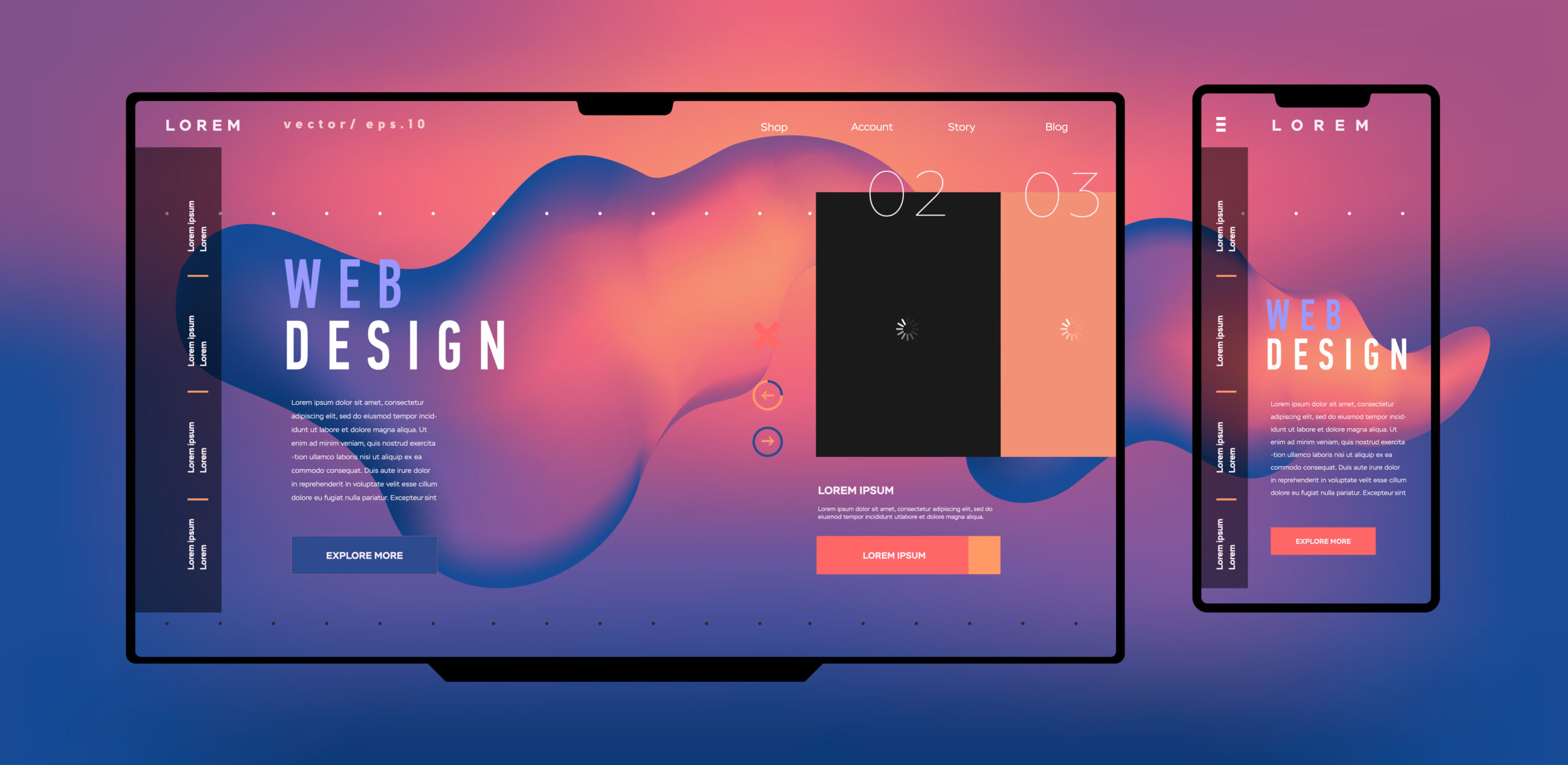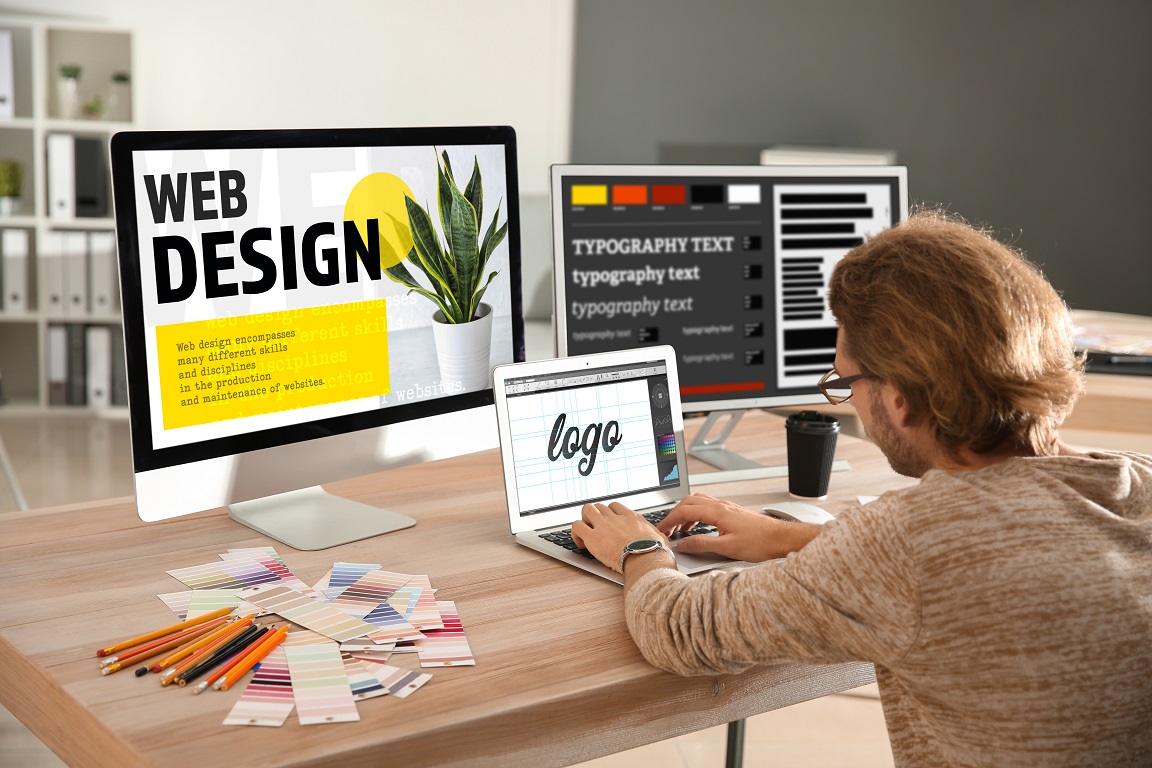How a web design company transforms user experience and boosts conversions
Wiki Article
The Value of User Experience in Reliable Web Design Approaches
User experience (UX) offers as a cornerstone in efficient web design methods. It shapes how users engage with a website, affecting their fulfillment and possibility of returning. A well-designed UX can enhance interaction via instinctive navigating and receptive designs. Ignoring these aspects might lead to stress and increased bounce prices. Comprehending the details of UX is necessary for developers aiming to create compelling digital experiences that reverberate with diverse audiences. What aspects truly drive successful user involvement?Recognizing User Experience and Its Effect On Layout
Although user experience (UX) is frequently perceived as a plain aspect of web design, it basically forms how users interact with a web site. UX encompasses all elements of the user's interaction, including use, ease of access, and total contentment. A favorable UX cultivates involvement, encouraging individuals to discover the site and return in the future. Alternatively, a negative experience can cause irritation, leading to high bounce rates and lost chances for conversion.Design aspects like navigation, material, and format organization play critical duties in shaping this experience. Reliable UX style prepares for user demands and choices, making certain that details is conveniently available and aesthetically enticing. In addition, understanding user actions with analytics can supply beneficial understandings, informing style decisions that improve usability. Eventually, an extensive understanding of UX permits developers to develop internet sites that not only draw in customers yet also promote purposeful communications that align with service objectives and user expectations.
Trick Concepts of Efficient User Experience
Effective user experience pivots on numerous essential concepts that boost site capability and involvement. Instinctive navigating style, receptive layout fundamentals, and the relevance of aesthetic hierarchy are important elements that add to a smooth interaction between individuals and internet material. Comprehending these principles enables designers to produce even more easy to use and obtainable digital environments.User-friendly Navigating Style
Intuitive navigation design serves as an essential portal to their total experience when customers run into a site. Efficient navigating enables users to effortlessly situate the info they seek, enhancing their interaction with the website. Key concepts include clear labeling, sensible organization, and regular positioning of navigating aspects. Tags ought to be uncomplicated, permitting users to anticipate the material they will certainly find. A well-structured hierarchy assists individuals recognize the connection between different sections, directing them via the site perfectly. Furthermore, receptive food selections and quickly available links add to a fluid experience throughout gadgets. By prioritizing user-friendly navigating, designers can considerably lower user aggravation and rise involvement, ultimately promoting a favorable perception of the web site and its web content.Responsive Format Essentials
A well-structured navigation system naturally leads to the requirement for a receptive design, which is important in today's diverse digital landscape. A responsive layout warranties that websites feature effortlessly throughout various gadgets, consisting of desktops, smartphones, and tablet computers. This flexibility enhances user experience by allowing web content to be visually coherent and quickly obtainable, despite screen dimension. Key concepts of receptive layout include liquid grids, versatile images, and media queries, which promote optimal watching. Furthermore, prioritizing touch-friendly components boosts interaction on mobile gadgets. By carrying out a receptive format, designers can fit individuals' demands, minimize bounce rates, and rise interaction. Eventually, a well-executed responsive design promotes a positive user experience, motivating site visitors to discover the website further.Aesthetic Hierarchy Relevance
Visual pecking order plays an important function in directing users with a web site, guaranteeing that crucial information captures their focus first. By tactically making use of dimension, contrast, spacing, and shade, developers can produce a clear path for customers to comply with. Larger aspects commonly attract the eye, suggesting their relevance, while contrasting colors can highlight telephone calls to activity. Furthermore, consistent alignment and group of associated material boost understanding, making navigation user-friendly. Reliable usage of aesthetic power structure not just improves usability yet additionally supports the total visual of the website, cultivating a favorable user experience. When users can easily recognize the most essential details, they are more probable to involve with the content, leading to enhanced complete satisfaction and interaction with the site.The Role of Use in Web Design
Use plays an important duty in web design, especially through navigation simpleness and adherence to accessibility criteria. Efficient navigating enhances user complete satisfaction by enabling site visitors to discover info rapidly and intuitively. Conference ease of access requirements assures that all customers, regardless of their abilities, can efficiently communicate with the site.Navigating Simpleness
Simplicity in navigation stands as a foundation of reliable web design, greatly affecting user experience. A streamlined navigation system permits customers to discover information rapidly and intuitively, decreasing frustration and boosting contentment. Clear labeling and rational framework are important elements, leading individuals effortlessly with the website. Repetitive web links or extremely intricate menus can disorient customers, causing enhanced bounce prices. In addition, mobile responsiveness has to be thought about, guaranteeing navigating stays straightforward across tools. Focusing on necessary pages and decreasing clutter further supports user engagement. Effective navigation not just cultivates a favorable experience yet additionally encourages customers to discover the site more thoroughly, inevitably bring about higher conversion rates. Hereof, navigating simpleness offers as an important element in the total effectiveness of web design techniques.Availability Criteria
User engagement is substantially boosted when sites adhere to ease of access criteria, making sure that all users, despite their capacities, can navigate and communicate efficiently. Compliance with these standards not just expands the audience but additionally boosts general user fulfillment. Accessible layout integrates functions such as message alternatives for pictures, keyboard navigation, and enough shade contrast, which promote use by people with impairments. Furthermore, carrying out these criteria can favorably influence search engine optimization (SEARCH ENGINE OPTIMIZATION) by enhancing website structure and quality. As web design advances, prioritizing availability becomes crucial in promoting an inclusive digital environment. By embracing these requirements, designers contribute to a more equitable internet, eventually driving user loyalty and involvement.Importance of Responsive Layout for User Interaction
As customers progressively accessibility websites via a variety of tools, the value of receptive layout comes to be vital for engaging individuals effectively. Receptive style warranties that a site adapts seamlessly to different display sizes, offering an ideal viewing experience despite the tool used. This flexibility boosts user involvement by promoting much easier navigating and interaction with material.When customers encounter a site that is responsive, they are more likely to remain much longer, discover better, and this hyperlink return in the future. A properly designed responsive format lessens the frustration often related to zooming and scrolling on smaller sized displays, thus minimizing bounce prices. Additionally, responsive layout can favorably affect online search engine rankings, as internet search engine focus on mobile-friendly internet sites. In today's electronic landscape, where mobile use continues to rise, carrying out receptive layout is not just valuable, but vital for keeping user interaction and ensuring a positive experience throughout all devices.
Enhancing Load Times for Better User Fulfillment

To improve lots times, web developers ought to focus on maximizing photos, leveraging web browser caching, and lessening HTTP demands. In addition, using Content Shipment Networks (CDNs) can accelerate content delivery by distributing it throughout different geographic places. Streamlining code, such as pressing CSS and JavaScript files, further adds to faster filling rates.
Ultimately, a commitment to boosting lots times not only improves user contentment however likewise reinforces brand commitment and improves the chance of repeat gos to. A swift, seamless experience is important for keeping individuals and promoting positive communications.
The Impact of Visual Hierarchy on User Interaction
Aesthetic hierarchy works as a necessary component in guiding user interaction on a site. By arranging material in a way that focuses on details visually, designers can influence how users involve and navigate with a website. This pecking order is developed with numerous style techniques, consisting of dimension, shade, contrast, and spacing. Larger typefaces or vibrant colors draw focus to critical aspects, such as calls to action or headlines, while controlled colors and smaller sized font styles can show subordinate information.Efficient aesthetic hierarchy aids users swiftly recognize what is essential, reducing cognitive tons and enhancing functionality. It enables user-friendly navigation, making it much easier for users to discover what they need without disappointment. As customers engage with a website, a well-structured aesthetic hierarchy fosters a more satisfying experience, inevitably causing higher involvement and conversion prices. Developers have to prioritize these click reference principles to create an user-centered and efficient web environment.
Measuring User Experience: Tools and Techniques

Often Asked Questions
How Can I Boost My Site's User Experience on a Spending plan?
To enhance a website's user experience on a budget, one can maximize web page load rate, simplify navigating, apply responsive style, improve material clearness, and collect user feedback for continual improvements, making sure a gratifying site visitor experience.What Are Typical User Experience Mistakes to Prevent in Web Design?
Usual user experience blunders in web design consist of cluttered formats, bad navigating, slow-moving filling times, lack of mobile responsiveness, overlooking ease of access, irregular branding, and failing to focus on user comments - web design company. Each can considerably prevent general site efficiency
Just how Usually Should I Update My Web Site for Better User Experience?
Sites should be updated regularly, ideally every few months, to preserve excellent user experience. Frequent updates assist address use problems, rejuvenate web content, and adjust to changing user needs, making sure the site remains appealing and appropriate.
Can User Experience Influence SEO Rankings on My Site?
User experience can greatly influence SEO positions, as online search engine focus on web sites that use seamless navigation, quick loading times, and interesting web content. A favorable user experience can lead to lower bounce rates and greater search presence.What Function Does Access Play in User Experience Style?
Availability plays an essential duty in user experience design by guaranteeing that all people, no matter capabilities, can communicate and navigate with an internet site efficiently. useful link This inclusivity boosts total contentment and involvement among diverse customers.User experience (UX) is frequently regarded as a simple facet of web layout, it basically forms how users communicate with a site. User involvement is considerably boosted when websites stick to ease of access requirements, guaranteeing that all individuals, regardless of their capacities, can browse and engage properly. Measuring user experience (UX) is necessary for comprehending exactly how successfully an internet site meets the demands of its individuals. Furthermore, usability screening, where real individuals navigate the website while viewers keep in mind problems, supplies direct responses on user experience. Common user experience blunders in internet design consist of cluttered designs, poor navigating, sluggish loading times, absence of mobile responsiveness, neglecting accessibility, inconsistent branding, and falling short to focus on user comments.
Report this wiki page